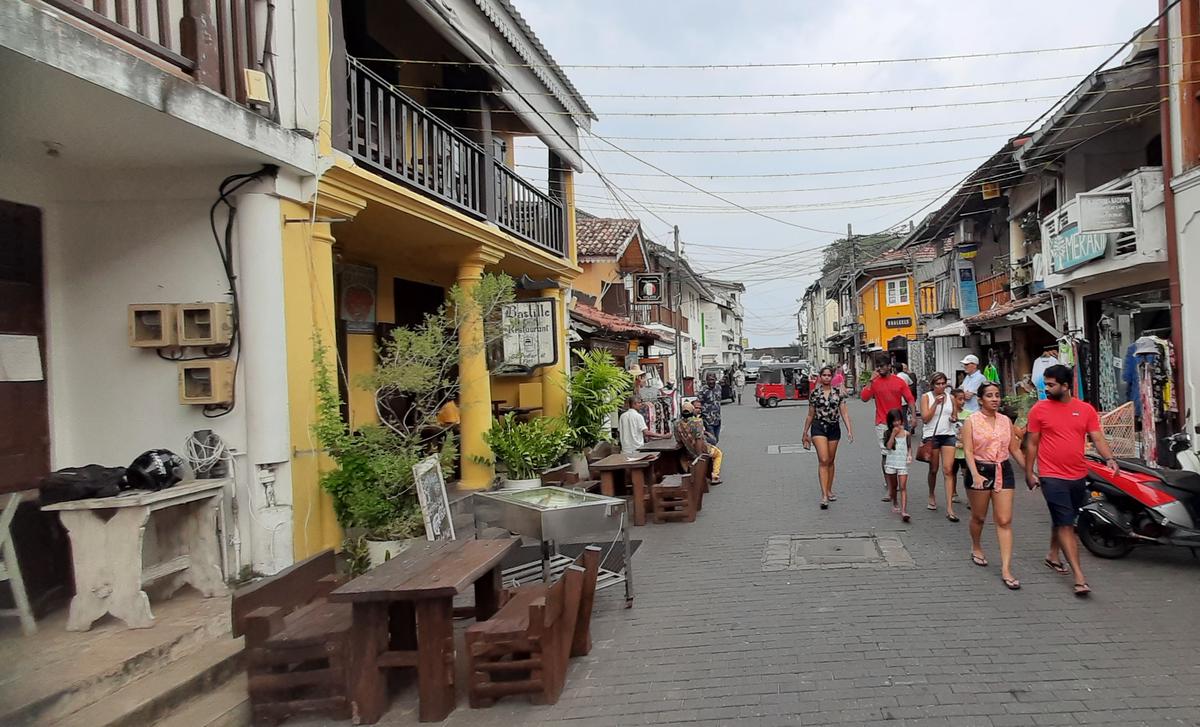At the close of 2022, crisis-hit Sri Lanka had recorded nearly 7.2 lakh tourist arrivals — more than three times the number seen in 2021, even if nowhere close to the country’s pre-pandemic mark of nearly 20 lakh visitors.
While authorities and the tourism industry pitched the modest, yet promising, figure as a sure sign of economic recovery, many in Galle, a tourism hotspot along the island’s southern coast, say their trade and lives have not looked more uncertain.
On a recent weekday, the usually thriving fort — also a functional heritage site with district courts, government museums and offices — was hardly teeming with visitors.
It was Taraka Jayasinghe Gunasekara’s first substantial hire in many days, from the neighbouring Matara district to Galle.
As his clients toured the ramparts around town, built by the Portuguese five centuries ago and later fortified by the Dutch, the 35-year-old is waiting in his autorickshaw, staring at his phone.
The three-wheeler driver’s matter-of-fact admission echoes the thinking of many young Sri Lankans, especially those in the employable age bracket.
The crushing economic meltdown last year prompted over 3 lakh Sri Lankans to leave, a record high in official outmigration figures on the island. Hundreds of others opted for perilous boat rides to faraway shores. If they left despite the well-known precarity around economic migration, it is not for the want of trying.
At the close of 2022, crisis-hit Sri Lanka had recorded nearly 7.2 lakh tourist arrivals — more than three times the number seen in 2021, even if nowhere close to the country’s pre-pandemic mark of nearly 20 lakh visitors.
While authorities and the tourism industry pitched the modest, yet promising, figure as a sure sign of economic recovery, many in Galle, a tourism hotspot along the island’s southern coast, say their trade and lives have not looked more uncertain.
On a recent weekday, the usually thriving fort — also a functional heritage site with district courts, government museums and offices — was hardly teeming with visitors.
It was Taraka Jayasinghe Gunasekara’s first substantial hire in many days, from the neighbouring Matara district to Galle.
As his clients toured the ramparts around town, built by the Portuguese five centuries ago and later fortified by the Dutch, the 35-year-old is waiting in his autorickshaw, staring at his phone.
For many, things have not changed much in the past few months. Long queues for essentials have disappeared, supplies have been restored, and street protests have ended, but many Sri Lankans like him are struggling to cope with the dramatic rise in living costs.
Official tourist arrivals reflect a sharp rise since 2021, but the impact is yet to be felt, according to locals, especially small traders, reliant on the tourism industry.
The war effect
A.G. Jayantha is seated by the Galle Fort selling wooden statues of mostly fishermen and elephants. He says, Russian tourists, are posing a peculiar challenge.
Some of them have stayed there for five or six months, perhaps fearing conscription back home. They seem to have some problem using their credit cards here, so they operate with very little cash and buy only essential items like bread and vegetables, he says.
Restaurant owners operating inside Galle Fort voice similar concerns about the unexpected ways in which a distant war is affecting their own, civil-warred scarred island.
As many as 91,272 Russian tourists entered Sri Lanka this year, official data shows, moving Russia up to the second spot among Sri Lanka’s main tourism markets, after India, which has remained the island’s largest source market.
China was also a key market until the pandemic, and Sri Lankan tour operators are hoping that China resuming outbound tourism brings good news for tourism in the island.
Last year’s financial meltdown is the latest blow to the industry, following the Easter Sunday bombings of 2019, and the pandemic in 2020 and 2021. The resilient sector earned over a billion dollars in 2022, and authorities are about to launch a global promotion soon to boost tourism revenue that is crucial for the country’s economic revival.
Tags: COVID-19 pandemic, outbound tourism, Sri Lanka Tourism
.jpg)